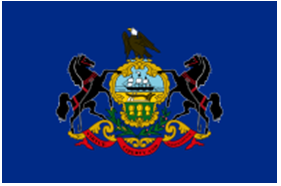
In the summer of 2011, here on Sunday Kos, I attempted to quantify the level of interest we could expect in the 2012 elections for each state. The top three states were largely where you would expect: Florida, Ohio and North Carolina. But Montana cracked the top 10, as well.
Clearly a lot has changed since July. The redistricting process has been completed in a number of states, Senate and gubernatorial elections have been firmed up, and the race for the White House is slightly clearer than it was six months ago.
So, to start off 2012 in earnest, it is time to reconsider which states are going to get the lion's share of the attention in the coming election year. Before we head through the top ten, however, let's reset the criteria, with a pretty significant change in one of the parameters:
1. THE RACE FOR THE WHITE HOUSE
As always happens, we can expect Barack Obama's re-election to consume the lion's share of the oxygen in this campaign cycle. So, it is weighted the heaviest. This is where the biggest change to the formula takes place. Each state's competitiveness was measured by race ratings offered by Charlie Cook and Stuart Rothenberg (to be replaced later by our own race ratings here at Daily Kos Elections). Eight points are awarded for a toss-up, four points for a state described as leaning to one party or the other, two points for a state described as likely to be one party or the other, and one point for a state described as a safe win. The average rating will then be multiplied by a factor related to the state's electoral votes. States with 3-9 electoral votes are multiplied by one, states with 10-19 electoral votes are multiplied by two, and so on.2. THE RACE FOR THE U.S. SENATE
With Senate control potentially at a knife's edge, the upper chamber in Congress will deservedly get a lot of attention. Here, let's look at the race ratings provided by three prognosticators: Cook, Stu Rothenberg and Larry Sabato. And all three have offered an early take on the landscape. Once again, if a race is defined as a toss-up, it will be worth eight points. If a race is defined as "leaning" to a party (even if it is not the incumbent party), it will be worth four points. A race defined as "likely" to go to a certain party gets two points. A "safe" seats gets a single point (note: this is a change since last July). The state's "Senate rating" is created by averaging the three scores together. In other words, if two of the guys have a race as leaning Democratic, while one has it as a likely Democratic race, the overall rating would be 3.33.3. THE RACE FOR THE U.S. HOUSE
Count me among those who think House control could also be very easily at a knife's edge. We will also go with the prognosticators here as well (who will eventually be replaced by our own Daily Kos Elections race ratings, by the way). Because it is possible for one state to have multiple races in the mix, the point values here will dissipate a bit: four points for a toss-up, two points for a leaner, and one point for a "likely" rating. Once again, an average of the three pundits will be taken.It is worth noting that, of all the parameters, this is the one that seems the most likely to shift dramatically, since the whims of redistricting are going to play a substantial role here. Also, expect big shifts as we go along, because one of the three pundits (Rothenberg) appears to only be forecasting in states where redistricting is already completed.
4. THE RACE FOR THE STATEHOUSE
For now, this will mean just the gubernatorial races ... For the sake of simplicity, let's offer up the same point values as the Senate races.
With the criteria set, head beneath the fold to find out who makes the top ten. As one might expect, the order of finish was shaken up quite a bit from last summer.